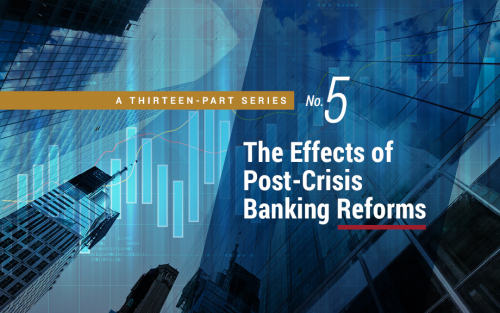Changing Risk‑Return Profiles

Are stock returns predictable? This question is a perennially popular subject of debate. In this post, we highlight some results from our recent working paper, where we investigate the matter. Rather than focusing on a single object like the forecasted mean or median, we look at the entire distribution of stock returns and find that the realized volatility of stock returns, especially financial sector stock returns, has strong predictive content for the future distribution of stock returns. This is a robust feature of the data since all of our results are obtained with real-time analyses using stock return data since the 1920s. Motivated by this result, we then evaluate whether the banking system appears healthier today, and if recent regulatory reforms have helped.
Are Rising Commodity Prices Unanchoring Inflation Expectations?
The U.S. inflation outlook is the focus of considerable discussion in business and central banking circles. As shown in the chart below, headline inflation measured as a year-to-year percentage change declined over the first half of 2010, leveled off in the second half of the year, and has been rising recently—driven largely by higher commodity prices. An important question is whether this recent increase is likely to be transitory or the beginning of a more sustained rise in headline inflation. In this post, we examine data from the Federal Reserve Bank of Philadelphia’s Survey of Professional Forecasters (SPF) and discuss how the survey’s unique features and rich information on inflation expectations can shed light on this question as well as offer insight into the inflation outlook that is not available from other survey instruments. While inflation has indeed increased recently, our analysis suggests that inflation expectations are not presently at risk of becoming “unanchored,” or showing a greater concern over higher future inflation.










 RSS Feed
RSS Feed Follow Liberty Street Economics
Follow Liberty Street Economics